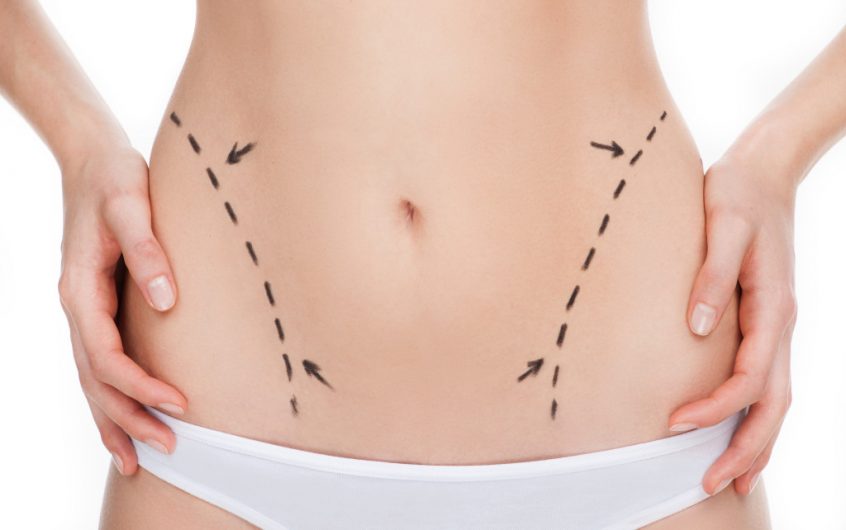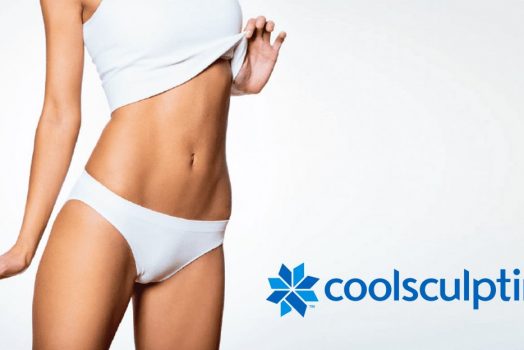Liposuction surgery is also known as lipoplasty or body contouring surgery. The surgery purpose is to remove excess deposits of fat allowing your cosmetic or plastic surgeon to sculpt you an improved body shape. Liposuction is commonly used to remove fatty deposits on the abdomen, waist (love handles), buttocks, hips (saddlebags), thighs, calves, ankles, breasts (including male breasts), back, arms and neck. In fact, almost any area of the body that has excess localized fat and good skin elasticity can benefit from body contouring through liposuction. As a proven effective technique at improving the body shape of clients, liposuction is often used in combination with other cosmetic procedures in order to improve their aesthetic outcome.
It is important to note that liposuction not a weight management treatment, will not remove cellulite, nor tighten loose skin. If these are issues of concern, your cosmetic or plastic surgeon will be able to recommend other procedures that can help improve these areas.
Liposuction Surgery Methods
As one of the most popular cosmetic procedures, there has been a proliferation in the number and types of liposuction available to those looking to sculpt and improve their physique. The primary difference between the different techniques is the technology used to assist in the fat removal process. While the manufacturer of each design claims to have a unique advantage over the other methods, the single biggest factor that will determine your satisfaction will be the skill and experience of the surgeon performing the procedure. Given the specifics of your goals, your cosmetic or plastic surgeon will recommend the method of liposuction surgery that will best achieve the results you are looking for.
Before considering laser or ultrasound assisted liposuction, it is important to verify that the device being used is approved for its intended application by Health Canada.
Suction-assisted liposuction (SAL)
The removal of fat from the body through the assistance of some form of suction. Fat removal involves the use of a cannula (a thin hollow tube that is inserted below the skin) to manually loosen fat. Suction is applied through the cannula to remove the fat from the body with specialized vacuum-powered equipment. Improvements in SAL include the ability to use smaller cannulas, leading to smaller incisions and more precisely sculpted contours. This is made possible by accompanying SAL with specialized techniques, such as tumescence and laser or ultrasound assistance.
Tumescent liposuction
Allows liposuction to be performed while the patient is under local anesthesia while also minimizing blood loss and reducing post-surgical pain and bleeding. The technique uses a basic solution of saline fluid combined with local anesthetic such as lidocaine and epinephrine though it may also include other medicated ingredients. This fluid solution is then injected into the target areas prior to surgery, causing blood vessels to shrink or constrict. The fat is then suctioned out of the target area, along with a certain volume of the solution. Some of the solution will remain in the body for several hours after the procedure and will slowly be drained out of the subcutaneous tissue.
Internal Ultrasound-assisted liposuction (IUAL)
Uses a form of ultrasonic energy assisted liposuction applied internally such as VASER Lipo™ to liquefy fat before it is removed by suction. The liquefaction of the fat tissue is caused when the high frequency vibrations of the ultrasonic energy passes through the tip of the cannula into the surrounding tissue causing the local fat cells to break loose from their surrounding tissue matrix. Because the fat is liquid at the time it is removed, the process is smoother and mechanically more efficient than traditional SAL (with or without tumescent anesthetic).
External Ultrasound-assisted liposuction (EUAL)
Uses a form of ultrasonic energy assisted liposuction applied externally such as UltraShape® or BodyFx™ to liquefy fat within the body. The liquefaction of the fat tissue is caused when the high frequency vibrations of the ultrasonic energy passes through the transducers to the targeted area, causing localized fat cells to break loose from the surrounding tissue matrix. In contrast to IUAL, however, there are two subtypes of EUAL systems and only one will then follow the EUAL with suction removal of the liquefied fat. The second method will follow the external ultrasound treatment with lymphatic drainage massage encouraging the body to collect, process and remove the liquefied fat using natural processes.
Laser-assisted liposuction (LAL)
Uses a form of laser assisted liposuction such as Smartlipo™ to gently liquefy the fat tissue before it is suctioned out. The liquefaction of the fat tissue is accomplished when the laser comes into contact with the undesirable subcutaneous fat; the laser then ruptures the fat and coagulates tissue as well as blood vessels in the area. The power of the laser also seals blood vessels and stimulates collagen to improve the health of skin in the area. This results in a tightening of the tissue and a reduction in bleeding, bruising, and swelling.
What is Liposuction Surgery
Liposuction surgery is generally performed as an outpatient procedure while the patient is under intravenous sedation combined with local anesthetic. In some cases and depending on the number of areas to be treated and volume of fat to be removed, a general anesthesia combined with tumescent solution flooding for the targeted area may be used. Your cosmetic or plastic surgeon will recommend the most appropriate method of anesthesia for your needs.
Your surgeon will then make a number of small, inconspicuous incision for the entrance of the cannula. The surgeon will then insert a thin hollow tube (cannula) to loosen and extract excess fat using a controlled back and forth motion.
Given the particulars of your specific case and desired outcome for the shape and appearance of your targeted area(s), your surgeon will employ SAL, tumescent, IUAL, EUAL, or LAL or a combination of one or more of the approaches described above. Depending on the number of areas to be treated, the entire procedure can last under one hour or up to 3 hours or longer and will be followed by a brief recovery and monitoring period at the clinic.
Depending on the volume of fat tissue to be removed, some numbness in the targeted area may last for a number of months, however increased sensation usually returns over time. Also, while there are variations to the size and number of the incisions used for liposuction surgery, in all cases, with proper planning and self-care the appearance of the scars can be hidden and minimized.
Liposuction Surgery Recovery
Today’s techniques allow for a relatively comfortable and brief recuperation after liposuction surgery. Most patients take about 1 week off from work to rest and heal at home, although they are still able to move about the house and participate in light activities. However, it’s important to carefully follow your plastic or cosmetic surgeons’ directions for self-care after surgery.
You will likely need to wear a compression bandage or garment around the treated area to minimize swelling and aid in healing. Additionally, it may be recommended that you refrain from heavy lifting and vigorous activities for at least few weeks.
If swelling persists, contact your surgeon to find out if your pain, redness and swelling is normal or a sign of a problem requiring additional attention.
Liposuction Surgery Risks and Considerations
Liposuction surgery will permanently remove localized fat cells from the treated areas, as these fat cells have been removed they will not grow back. However it is very important to maintain a healthy lifestyle and a stable weight in order to enjoy the results of your liposuction surgery.
As one of the most popular elective procedures in the world, liposuction is quite safe. However, no surgery is completely free of risk. In general, potential risks of liposuction include reaction to the anesthesia, bruising, swelling, loss of sensation, damage to local tissue and organs, infection, excessive bleeding, irregular contours or asymmetries, and the need for revision surgery.
Be sure to speak with your cosmetic or plastic surgeon about the benefits and limitations associated with liposuction surgery, and ensure that you fully understand the procedures and their related complications prior to signing your consent form.




